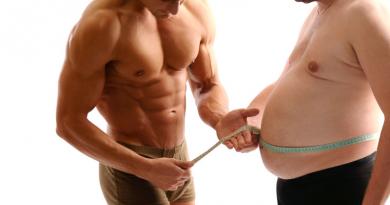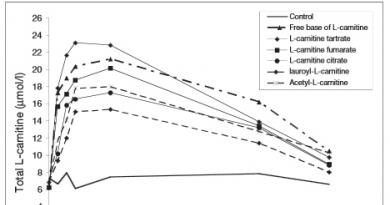For many young people, the question of how to pump up biceps and triceps is a stumbling block. Even with their good general athletic shape, working out the above-mentioned muscles requires special knowledge and skills. We have tried to optimize the presentation in this material.
This article is addressed both to men with a minimum level of sports training, and to those who for some reason cannot attend the gym. Our goal is to show how you can develop your biceps and triceps by training at home. In such exercises, the maximum effect is achieved by men who combine in their training the factor of personal motivation with knowledge of the laws of the bodybuilding training process.
About motivation
Why did we start with motivation? Yes, because the effectiveness of home training depends solely on the ability of the practitioner not only to plan approaches and sets, but also to strictly practice all the planned exercises.
It's no secret that working out at home is more difficult than in the gym. There are many temptations here: delicious food, a home gaming PC, and who knows what else! A house is a house. And here you need to devote one and a half to two hours to strength exercises! Let's face it, not everyone succeeds.
A certain amount of perseverance is important here. Therefore, we insist that on the eve of planning the training process, you convincingly formulate your motivation: why you want to build up your biceps and triceps. It should be as individual as possible.
So there you have it! Amazing. This will be your first entry in your training log.
Minimum set of home training equipment
If you have motivation (and this is the main thing), it’s time to think about training equipment. Not everyone can afford to purchase a machine with a dialing rod. But almost anyone can buy a horizontal bar and hire a craftsman with a hammer drill to securely fasten it.

You will also need, or better yet, two. An expander will also come in handy. If you have a narrow chair with durable wooden railings in your home, you can also use it as an exercise machine. A regular stool will also come in handy for your biceps and triceps exercises.
For further progress in training using a horizontal bar, it may be useful to have additional weights in the form of a regular backpack, inside of which there is a plastic bag with sand of the weight you need.
Basic exercises
Exercises for biceps and triceps are performed with emphasis and separately. As you know, with the help of biceps the arm is bent, and with the help of triceps it is extended. They are called antagonist muscles. Only their harmonious development ensures the proper effect of training. They are performed with weights, so to avoid injury they should be done after an intense warm-up that warms up the muscle fibers.
5 basic biceps exercises at home
First exercise. Body position - standing. Feet shoulder width apart. In the hands, palms up, there are dumbbells. Alternately, when exhaling, the arm bends, and when inhaling, it extends. The weight of the dumbbells is selected in such a way as to provide 7-8 repetitions for each arm in the set. The last 1-2 times should be performed with maximum mobilization of the trainee’s strength.

Second exercise. The starting position is almost the same as that presented in the first exercise, however, the hands with dumbbells are turned towards the body with the palms of the hands. In this position, in addition to the load, the biceps feel a stretching effect.
Third exercise. Body position - sitting. The hand gripping the dumbbell is lowered and the elbow rests on the inner thigh. As you exhale, the arm bends, and as you inhale, it slowly straightens.
Fourth exercise. Pull-ups on a home horizontal bar. Hands in a narrow grip, palms turned towards you. The exercise is performed without rocking. Number of repetitions - 7-8. If the last pull-ups in the set are performed easily, then the trainee puts a backpack with appropriate weights on his shoulders. This is the most intense biceps exercise of the four above.
Fifth exercise. Stretching a tape expander for the biceps. The position of the torso is standing, legs are shoulder-width apart. You stand on the expander with both feet. The arms are lowered down, the palms are turned up, the elbows are pressed to the body. The expander is not stretched in this position. Directly during the exercise, the arms, overcoming the resistance of the expander, bend at the elbows, while the elbows (if possible) are pressed to the body.
Triceps. Home workout
First exercise. Standing French press. The body is straight, legs are shoulder-width apart. Hand position with dumbbells: elbow raised up, dumbbell behind back. The other hand belays the dumbbell, but does not support it. As you exhale, the arm gradually straightens at the elbow, while the hand rises from the dumbbells. The trainee focuses on the triceps. As you inhale, the arm bends again and the dumbbell is placed behind your back again.

Second exercise. Seated French press. Performed similarly to the first exercise. The trainee sits on a stool.
Third exercise performed using a chair with wooden handrails. To perform it, the chair is placed opposite the sofa so that the feet are on the sofa, and the hands are pulled back and down to grasp the handrails of the chair, just as is done on the uneven bars. The point of the exercise is to flex/extend your arms while pushing.
Fourth exercise. A tape expander is attached to the home crossbar. The student turns his back to the horizontal bar. The body is straight, legs are shoulder-width apart. The exercise is performed with hands alternately. The hand is pulled back, as with a French press, but instead of a dumbbell, it holds a stretched expander. Then, with the elbow stationary, the arm straightens forward and upward.
Fifth exercise. Bending/extension of arms while lying down. Hands are placed narrowly. Otherwise, the main effort will be on the chest muscles. When performing the exercise, use a backpack with weights.
Different training accents
Note that for some reason some people train their biceps. The triceps are ignored. Why is this happening? (Note that this is short-sighted.) The answer is simple. The biceps are the first thing that catches the eye when a man wears a T-shirt in the summer. However, the strength potential of the student suffers from such a deformed training process. After all, in harmoniously developed athletes, the triceps are almost twice as massive as the biceps! There are different ways you can train your biceps and triceps at home.

Truly “cool” men, martial artists, train the triceps to a greater extent, with tempo exercises, without overly “clogging” it with weights, but by developing special speed endurance. After all, this is a “shock” muscle! The development of so-called reactive strength is achieved through the use of expanders in the training process.
When delivering a blow, the triceps of such an athlete straightens the arm with lightning speed, and the biceps bends it to its original position with the same lightning speed. Ideally, the master achieves such sharpness of the blow that the concrete plates break, and during the duel the defender does not notice the moment of its application. However, the topic of our article does not concern this kind of training, because the volume of muscles in their process grows relatively little.
The problem of training effectiveness
It would seem that exercises and special literature telling about how to pump up biceps and triceps are familiar to everyone. So why doesn't everyone succeed in bodybuilding? There may be secrets to effective training.
It is impossible to consider only two groups in isolation from the others. Moreover, the muscular system of the human body is created in such a way that it is impossible to build up only one muscle group for a long time with special exercises, without increasing the volume of others. After a month or a month and a half of such narrowly focused training at home, the trainee will notice with annoyance that his results have stopped. What should he do in such a situation? The answer is simple: first get competent advice on how to pump up your biceps and triceps at home.
The Super Recovery Cycle is the Basis of Progress
First, such an unlucky athlete should understand the basics of training load and cyclical training. You should clearly understand the main principle that bodybuilders use when increasing muscle mass. It is based on super recovery.

Sports medicine has established that the optimal result is due to the cyclic performance of each exercise for 5-6 sets in such a way that the training weight allows the trainee to perform no more than 7-8 repetitions in each set, working to the maximum. In this case, the last two times are performed by the athlete through force.
Please note that during intense exercise, microtrauma of muscle fibers occurs. Don't be afraid of it! This is natural. The paradox is that it is the fibers that are injured by a well-chosen training load that maximize their volume. In this case, one “but” must be kept in mind.
Attention! The super-recovery cycle assumes that, in addition to training days, it also contains from one to several days without training. Injured fibers must recover! That is why men who not only understand how to pump up biceps and triceps at home, but also have positive practical experience in this area, train less often than losers obsessed with daily training.
Comprehensive training and optimal development of arm muscles
The second condition for effective training is its complexity. We already mentioned this when talking about stalled results. There is no need to reinvent the wheel; recommendations from practicing athletes can serve as an ideal hint on how to pump up biceps and triceps at home. Moreover, the following is considered the classic accentuated muscle training for a training cycle of three workouts:
- back - biceps;
- chest - triceps;
- legs - shoulders.
However, for sustainable progress, after a certain time the emphasis should be changed. For example:
- chest - biceps;
- back - triceps;
- shoulders - legs.
Combination of bodybuilding with athletics training
For some athletes, the training cycle combines bodybuilding training with training of a different nature, where the load falls on the legs. If you are not a professional bodybuilder (in which case specialization is important), then adding cyclic loads to develop the cardiovascular system is welcome. These could be gaming activities: football, basketball. Moderate middle-distance running is also beneficial for increasing the overall homeostasis of an athlete. Be that as it may, a heart and blood vessels trained in this way will provide the bodybuilding athlete with greater potential. The only condition for such additional classes is their auxiliary, warm-up nature.

Accordingly, in this case, a purely bodybuilding training cycle can exclude special ones. In this case, the emphasis in the training cycle will look different: biceps-triceps-shoulders-back.
Conclusion
To summarize our review, it should be noted that bodybuilding exercises at home are less effective than training in the gym under the guidance of experienced trainers. If there is a specialized gym near your home and the price of a subscription does not bother you, then there is nothing to think about training at home. However, under certain living conditions of a particular person, it is possible to train muscles (biceps, triceps and others) only within their own walls. At the same time, we note that if you have strong motivation and a competent training plan, the effect can be very impressive.



